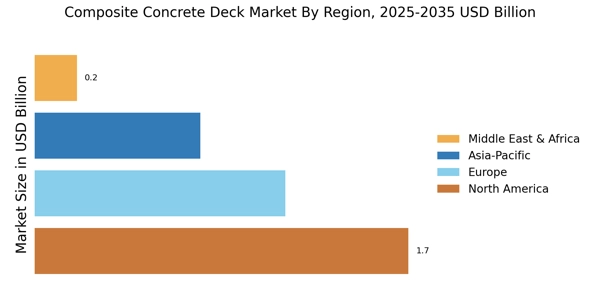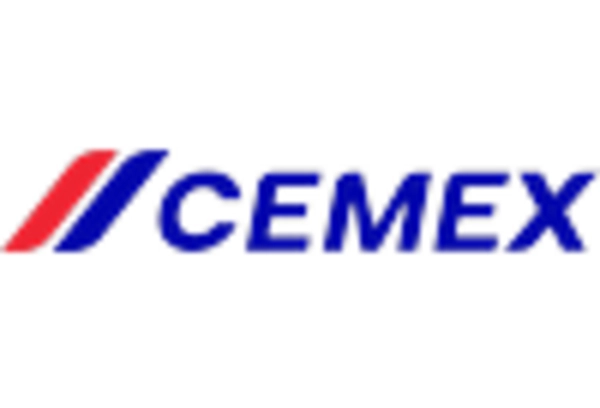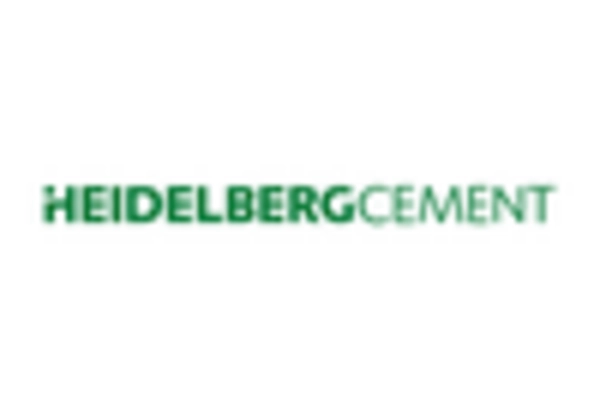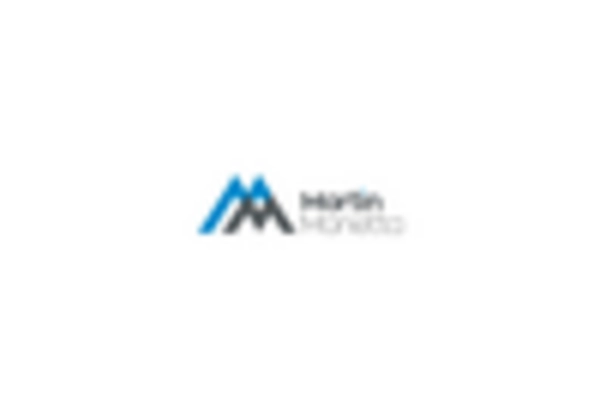Cost Efficiency
Cost efficiency remains a crucial driver in the Composite Concrete Deck Market. The rising costs of traditional construction materials have prompted builders to seek more economical alternatives. Composite concrete decks offer a favorable balance between initial investment and long-term savings due to their durability and low maintenance requirements. Market analysis indicates that projects utilizing composite materials can reduce overall construction costs by up to 15%. This financial advantage is particularly appealing in competitive bidding scenarios, where cost-effective solutions are prioritized. As a result, the Composite Concrete Deck Market is likely to see increased adoption of these materials in various construction applications.
Regulatory Support
Regulatory support is a vital factor influencing the Composite Concrete Deck Market. Governments worldwide are implementing policies that encourage the use of advanced construction materials, including composites, to enhance safety and sustainability in infrastructure projects. These regulations often include incentives for using materials that meet specific performance standards, which composite concrete decks typically fulfill. The market is expected to benefit from these supportive measures, with growth projections indicating an increase of approximately 5% in the coming years. This regulatory environment fosters innovation and investment in the Composite Concrete Deck Market, driving further advancements in material technology and application.
Urbanization Trends
Urbanization trends significantly impact the Composite Concrete Deck Market. As urban areas expand, the demand for infrastructure development, including bridges, highways, and commercial buildings, increases. Composite concrete decks are favored for their ability to support heavy loads while minimizing maintenance costs. The market is projected to experience a surge in demand, with estimates suggesting a growth rate of 4% annually as urban centers continue to develop. This trend is further fueled by government investments in infrastructure projects aimed at enhancing urban mobility and connectivity, thereby creating opportunities for the Composite Concrete Deck Market.
Technological Innovations
Technological advancements play a pivotal role in shaping the Composite Concrete Deck Market. Innovations in material science and engineering have led to the development of high-performance composite materials that offer enhanced strength and longevity. For instance, the integration of fiber-reinforced polymers has improved the structural integrity of concrete decks, making them more resilient to environmental stressors. The market is expected to grow as these technologies become more accessible, with a projected compound annual growth rate of around 6% over the next five years. This growth is indicative of the industry's response to the demand for more efficient and durable construction solutions.
Sustainability Initiatives
The Composite Concrete Deck Market is increasingly influenced by sustainability initiatives. As environmental concerns rise, construction practices are shifting towards eco-friendly materials and methods. Composite concrete decks, known for their durability and reduced environmental impact, align with these initiatives. The industry is witnessing a growing demand for sustainable building solutions, with a projected increase in market size by approximately 5% annually. This trend is driven by regulations promoting green building practices and the construction sector's commitment to reducing carbon footprints. Consequently, manufacturers are focusing on developing composite materials that utilize recycled content, further enhancing their appeal in the Composite Concrete Deck Market.


















Leave a Comment